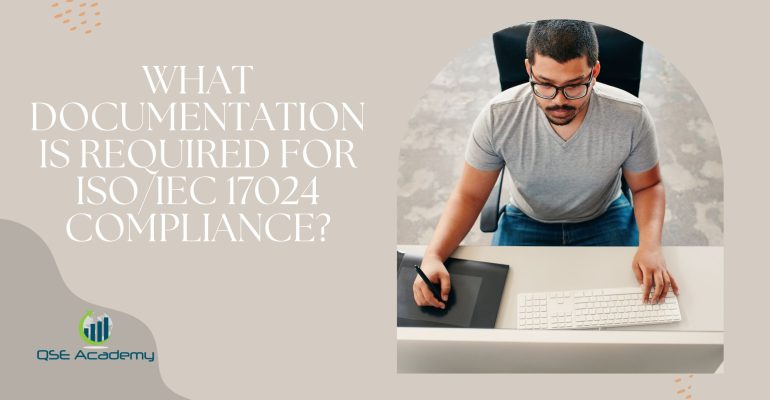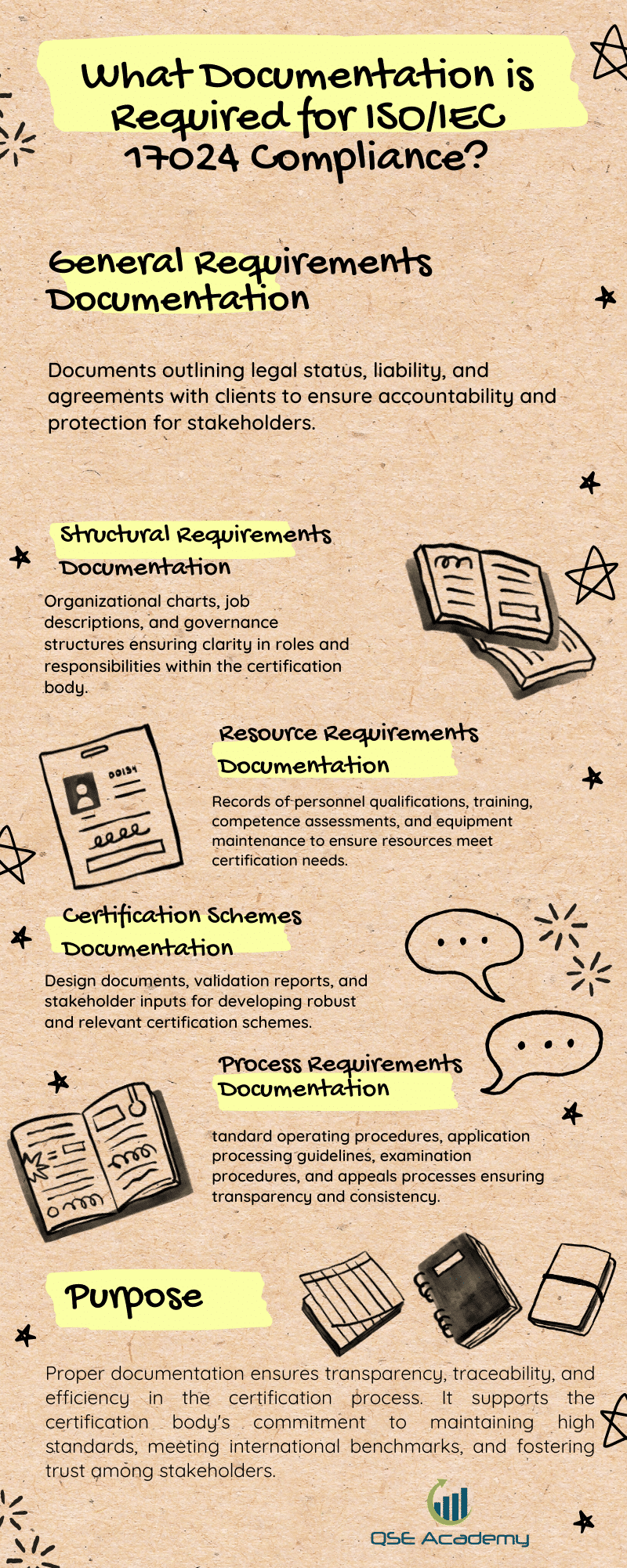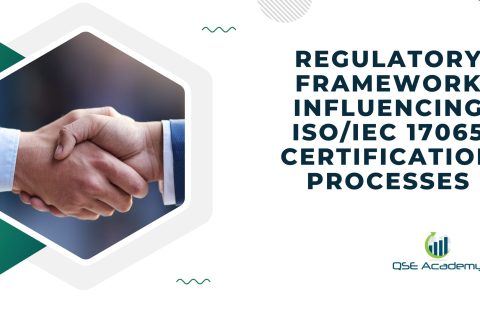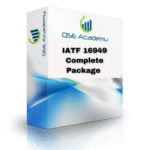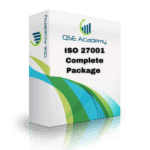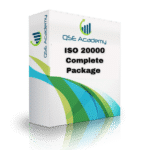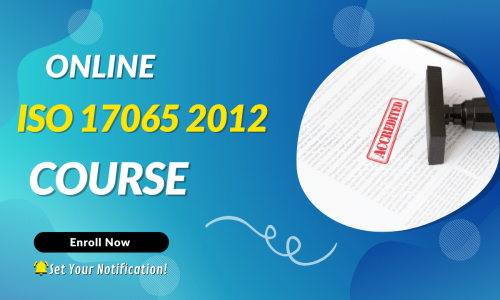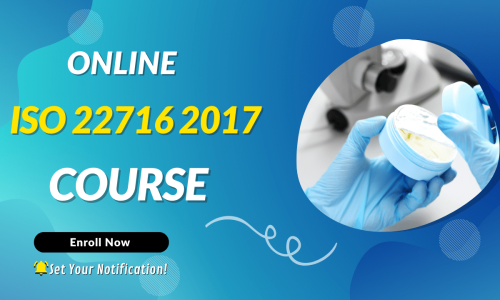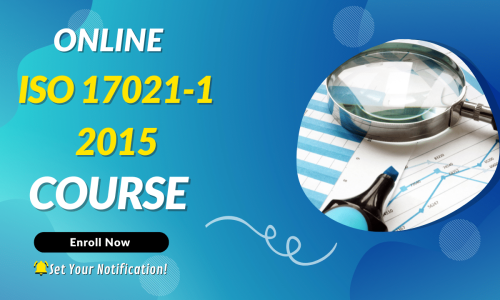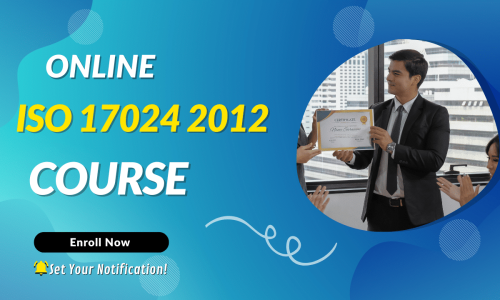What Documentation is Required for ISO/IEC 17024 Compliance?
Imagine a puzzle where each piece plays a critical role in building a comprehensive picture of quality and competence. In the world of professional certification, ISO/IEC 17024 acts as a blueprint for those intricate pieces.
ISO/IEC 17024 sets out criteria for organizations that certify individuals in various professions, ensuring they operate in a consistent, comparable, and reliable manner worldwide.
This article serves as a guide, breaking down the labyrinth of documentation required for ISO/IEC 17024 compliance, ensuring your certification body can meet international benchmarks for best practice and excellence.
Introduction
ISO/IEC 17024:2012 offers a global benchmark for personnel certification bodies, ensuring that they operate in a consistent, comparable, and reliable manner. By providing a structured framework, it allows these bodies to assess the competence of individuals in a variety of professions and occupations. This is increasingly pivotal in today’s globalized economy where the need to trust the capabilities of personnel is paramount.
The importance of ISO/IEC 17024 cannot be overstated. It instills confidence in stakeholders by demonstrating that certified professionals meet the specific requirements of their roles. Personnel certification bodies that comply with ISO/IEC 17024 are recognized for their robust certification processes, which cover the development and maintenance of certification schemes, the assessment process, and management system requirements.
In this article, we delve into the documentation vital for achieving and maintaining compliance with the standard. Proper documentation is not merely about satisfying a criterion; it is crucial for ensuring the transparency, traceability, and efficiency of the certification process. Our guidance aims to support certification bodies in navigating the complexity of these requirements, fostering a clear understanding of the necessary documents needed to uphold the integrity and competence of certification activities.
Understanding ISO/IEC 17024 Documentation Requirements
ISO/IEC 17024:2012 outlines the global benchmark for certified bodies engaging in the certification of persons. A critical aspect of ensuring compliance with ISO/IEC 17024 is proper documentation. A vital tool for both certification bodies and scheme owners, well-maintained documentation underpins the certification process, from development through to the decision on certification.
Essential Documentation Elements:
- Certification Schemes Description: This covers the scope, job and task descriptions, required competencies, and the assessment process to verify conformity.
- Management System Requirements: It includes documented procedures and policies demonstrating the operation and effectiveness of the certification body.
- Records of Certification Activities: Kept to exhibit transparency and traceability in the certification process, from the application stage to issuing, maintaining, renewing, suspending, or withdrawing certification.
Key to the documentation is its accuracy, consistency, and accessibility. Keeping documents current is non-negotiable for certification bodies and is pivotal in providing assurance to stakeholders and accreditation bodies that the certification body is performing competently. Additionally, these documents must be systematically reviewed and retain enough detail to recreate the certification process if needed.
Moreover, ISO/IEC 17024 documentation must adhere to legal and regulatory requirements, acting as a foundation to mitigate risks associated with certification activities. In essence, documentation acts as an assurance of quality and integrity of the certification.
Certification bodies must ensure that personnel are competent in managing, arching, and securing records, guaranteeing confidentiality and protection of information. With such comprehensive documentation requirements, ISO/IEC 17024 creates an environment of trust where the competence of individuals is recognized internationally.
General Requirements Documentation
ISO/IEC 17024:2012 sets the benchmark for the certification of persons, ensuring that certification bodies operate in a competent, consistent, and impartial manner. Within Section 2 of ISO/IEC 17024, General Requirements Documentation outlines several key components critical for personnel certification bodies to maintain integrity and reliability in their certification processes.
At the forefront is the legal status and liability of the certification body. It must be a legally recognized entity with clear accountability for its activities. Documenting its legal structure, the entity demonstrates its capacity for rights and duties under prevailing laws, thereby ensuring protection for itself and its stakeholders.
To regulate interactions with clients and other involved parties, the certification body must establish agreements defining rights, responsibilities, and expectations. This not only provides a basis for accountability but also clarifies the scope of work and procedure, safeguarding the interests of all parties.
Impartiality and independence are paramount to maintaining the credibility of certification. Documented policies must be upheld to avert conflicts of interest and ensure impartial operations. This involves all personnel declaring any potential conflicts and adhering to a formal process for their management.
Equally essential is the certification body’s commitment to confidentiality and data protection. Data protection policies and confidentiality agreements are vital to safeguarding personal and proprietary information collected during certification activities. Such documentation must comply with relevant laws and emphasize the prevention of unauthorized data disclosure, thereby reinforcing the trust of stakeholders in the certification body.
These pillars of Section 2 form the keystone in building assurance among stakeholders that certification processes are handled with the highest degree of professionalism and ethical standards, reflecting the essence of ISO/IEC 17024:2012.
Structural Requirements Documentation
In the arena of personnel certification, ISO/IEC 17024 stands as a keystone standard, setting forth rigorous criteria for organizations that certify individuals. These certification bodies must possess a robust and clearly defined organizational structure to ensure the proper execution of certification activities. Adhering to this standard involves comprehensive documentation, which is a critical component under Section 3: Structural Requirements.
Organizational charts are indispensable in this documentation, providing a clear visual representation of the organizational hierarchy. These charts must outline the relationships and lines of authority between different roles within the certification body. Detailed job descriptions should accompany the charts to delineate the specific responsibilities and competencies required for each position.
A primary focus within the structural requirements is the governance of the certification body. Documentation must specify the governance structures, elucidating the management responsibilities that drive the certification process. Oversight mechanisms should also be distinctly documented to demonstrate how the certification body effectively monitors and reviews its certification activities and decision-making processes.
Resource management is another critical element within the structural requirements. The certification body must maintain records of resource allocation, ensuring all certification schemes are adequately supported. This includes documentation of both human resources and the necessary infrastructure and facilities. Proper documentation guarantees that the body has the necessary capabilities to manage the certification of persons effectively.
In summary, documentation for ISO/IEC 17024’s structural requirements ensures a clear pathway for accountability, effective governance, and the proper allocation of resources. It lays the foundation for establishing trust and integrity in the certification of professionals, offering assurance to stakeholders that certified individuals meet the required competencies established by the relevant certification schemes.
Resource Requirements Documentation
Section 4 of ISO/IEC 17024, which focuses on Resource Requirements, sets forth stringent criteria that personnel certification bodies must satisfy to ensure the competence and consistency of their certification processes. ISO/IEC 17024 serves as the renowned global benchmark for bodies responsible for the certification of persons across a wide range of professions and industries.
Competence of Personnel: The bedrock of a credible certification body is the competence of its personnel. This includes not only the staff directly involved in the certification activities but also any individuals acting on its behalf, such as consultants or external assessors. Accordingly, documentation of personnel qualifications is pivotal. This encompasses detailed resumes outlining individual qualifications, relevant experience, and professional accomplishments.
In addition to academic and professional credentials, records of ongoing training and professional development plans are crucial. These illustrate an organization’s commitment to maintaining the paramount level of expertise and knowledge in its workforce. Moreover, evidence of regular competence assessments and evaluations demonstrates the certification body’s proactive approach in ensuring the capacity of its personnel to fulfill their designated roles effectively.
Supporting Resources: Another critical aspect outlined in ISO/IEC 17024 is the need for robust support resources. Certification bodies must maintain comprehensive equipment inventory logs, along with meticulous maintenance and calibration records. The condition and reliability of equipment and measurement instruments are fundamental to the precision of assessment processes. Hence, keeping accurate and current records validates the integrity of the entire certification operation.
Summary Table:
| Documentation Requirement | Purpose |
| Personnel Qualifications and Resumes | Verify the credentials and experience of certification body personnel. |
| Training Records | Demonstrate ongoing professional development and knowledge upkeep. |
| Competence Assessment Records | Ensure the competence of personnel through regular evaluations. |
| Equipment Inventory | Detail available resources and their operational status. |
| Maintenance & Calibration Records | Confirm the accuracy and readiness of equipment and instruments for assessment. |
The adoption of ISO/IEC 17024 by personnel certification bodies can not only enhance the reliability of their certification schemes but also provides assurance to stakeholders, scheme owners, and subject matter experts that the certifications granted are reflective of genuine competence. By aligning with the standard, bodies operating certification programs exhibit their dedication to upholding high levels of quality and consistency in their certification activities.
Certification Schemes Documentation
ISO/IEC 17024 is a globally recognized standard that provides a benchmark for organizations involved in the certification of individuals across various industries. It ensures that the certification process is impartial and that a certification body operates a high-quality system.
Certification Schemas Documentation
Certification bodies must maintain robust documentation to support the integrity and validity of the certification process. Key documents required under ISO/IEC 17024 include:
- Design Documents: These detail the structure and components of the certification scheme, ensuring clarity and coherence in what the certification covers and what it intends to assess in an individual’s competence.
- Validation Reports: They demonstrate that the certification scheme’s design effectively assesses an individual’s competence in the relevant area.
- Stakeholder Input: Evidence of consultations with a range of stakeholders, including scheme owners, subject matter experts, and potential scheme users, is crucial in developing a credible certification schema.
Certification Process Requirements
- Application Forms and Guidelines: Documented procedures that guide applicants through the certification process must be clear and accessible.
- Examination Procedures: These outline how exams are developed, administered, and scored to ensure fairness and objectanees across all applicants.
- Competence Assessment Criteria: Transparent criteria detailing how an individual’s competence will be measured are essential to the trustworthiness of the certification process.
Certification Decision
- Decision-making Criteria: The criteria and the process used to make certification decisions must be documented, ensuring that decisions on certification are fair, consistent, and impartial.
- Certification Records: Accurate and secure records of certification and recertification must be kept to maintain the integrity of the certification.
To sum up, documentation within the ISO/IEC 17024 framework is central to building trust and assurance among stakeholders that certification of persons is carried out with rigor and impartiality. The above documentation feeds into a transparent and effective certification process that is vital for maintaining confidence in the certification of professionals across the globe.
Process Requirements Documentation
ISO/IEC 17024 establishes rigorous international benchmarks for organizations that certify individuals. Known as personnel certification bodies, these organizations are essential in ensuring that specific competencies are met by professionals across various industries. Section 6 of ISO/IEC 17024 outlines the Process Requirements Documentation necessary for these bodies to maintain integrity and ensure the competence of individuals they certify.
Standard Operating Procedures (SOPs)
Personnel certification bodies must develop and follow strict SOPs. These procedures should encompass the entire certification lifecycle from application to renewal or revocation. SOPs ensure consistency, fairness, and transparency in the certification process, bolstering stakeholder confidence.
Certification Process
A documented certification process is vital. This includes clear criteria for the acceptance or rejection of applications, ensuring that candidates are assessed impartially. The steps from initial inquiry to decision must be explicitly defined to avoid ambiguity.
Documented Inspection and Testing Methods
To prevent bias and error, the methods of inspection and testing must be standardized. The documentation includes metrics for evaluation, the qualifications of those executing the assessments, and tools used.
Handling of Certification Applications
A structured approach to application processing is imperative. This section of the documentation will outline the steps for reviewing and processing applications, including timelines and the handling of sensitive information.
Appeals and Complaints
The certification body must have documented appeal handling procedures and a complaints management system. This transparency is crucial in providing assurance to applicants and maintaining credibility.
Table: Key Documentation Elements
| Documentation Component | Description |
| SOPs | Detailed operational guidelines for the certification body |
| Certification Process | Step-by-step process from application to certification decision |
| Inspection/Testing Methods | Description of standardized methods to ensure impartiality |
| Application Processing | Criteria and procedures for managing applications |
| Appeals and Complaints | Systems for documenting and resolving disputes |
In conclusion, Section 7 of ISO/IEC 17024 mandates that certification bodies maintain comprehensive and detailed documentation for their certification procedures. This guarantees that the bodies operate under a consistent framework, bolstering the confidence of stakeholders and enhancing the overall value of the certification provided to individuals.
Management System Documentation
ISO/IEC 17024:2012 sets forth rigorous criteria for organizations that certify individuals, ensuring a global benchmark for personnel certification processes. A critical aspect of these standards is the Management System Documentation, detailed in Section 7. Organisations seeking accreditation must meticulously document their Quality Management System (QMS) to demonstrate competence and reliability in certifying professionals.
The QMS documentation serves as the bedrock for a certification body’s operations, outlining its policies, objectives, and responsibilities in crystal-clear terms. Included in the must-haves are a QMS manual, which encapsulates the organization’s quality framework, and policies that underpin its certification activities.
Certification bodies are tasked with establishing quality objectives and plans, fostering continual improvement, and ensuring that these objectives are measurable and aligned with the requirements of ISO/IEC 17024:2012. Documentation of these elements is crucial to assess their efficacy and guide strategic direction.
Moreover, Section 7 emphasizes the importance of conducting internal audits and management reviews, with diligence in maintaining respective schedules, reports, and meeting minutes. These records must be carefully preserved to aid in the tracking of performance against standards and the implementation of action plans.
In the realm of corrective and preventive actions, ISO/IEC 17024 necessitates thorough documentation. Non-conformity reports and the subsequent corrective and preventive records are a testament to a certification body’s commitment to upholding its quality promise, highlighting a responsive and responsible approach to deviations.
To encapsulate the gravity of these details, consider the following structure:
| Document | Purpose | Relevance to ISO/IEC 17024 |
| QMS Manual | Details the quality framework | Outlines certification body’s adherence to standards |
| Quality Policies | Describes specific protocols and actions | Sets the foundation for operational consistency |
| Quality Objectives | Lists targets against which to measure success | Ensures continuous improvement |
| Audit Schedules | Outlines the timings for internal audits | Verifies compliance with documented policies |
| Reports & Minutes | Maintains a record of reviews and audits | Serves as evidence for management’s engagements |
| Action Records | Logs of corrective and preventive measures | Acts as accountability and improvement tracking |
In summary, success in accreditation hinges on the robustness of the management system documentation. An organization must foster a disciplined documentation culture, ensuring that all activities related to personnel certification are systematically recorded, continually reviewed, and rigorously improved. This documentation not only serves as evidence of conformity to ISO/IEC 17024 but also instills confidence among stakeholders that the certification body operates with rigor, consistency, and an unwavering commitment to quality.
Records and Information Management
ISO/IEC 17024:2012 specifies rigorous standards for documentation control and records management for personnel certification bodies. These organizations must maintain a well-defined document control system encompassing policies and procedures that ensure the currency and accuracy of all documents related to certification activities. The system must employ version control logs to track changes made to crucial documents, facilitating transparency and traceability.
Key Features of Document Control:
- Policies and procedures governing document approval, review, and changes
- Version control to manage document revisions
- Distribution records to track the dissemination of documents
- Secure access to prevent unauthorized changes
Records Management is another crucial aspect of ISO/IEC 17024 compliance. Personnel certification bodies are expected to have in place robust policies for the retention of records. These policies should outline the lifespan of different types of records and ensure their accessibility, retrievability, and security. Record-keeping systems must protect sensitive information from unauthorized access, corruption, or loss, reflecting the importance of preserving the integrity and confidentiality of certification records.
Key Features of Records Management:
- Record retention policies dictating durations and conditions for keeping records
- Secure and reliable record-keeping systems
- Protection measures against unauthorized access to sensitive data
Table: Document and Record Control Features
| Feature | Description |
| Document Control | Policies and version logs ensuring the accuracy and relevance of certification documentation |
| Records Management | Retention policies and secure systems to maintain and protect certification records |
Personnel certification bodies are thereby held to clear standards for appropriate document and record handling, aligned with the overarching goal of ISO/IEC 17024: ensuring the competency and reliability of certified professionals.
Continuous Improvement Documentation
In accordance with ISO/IEC 17024, which sets forth the benchmark for the competence of personnel certification, Section 9 emphasizes the vital role of continuous improvement in certification bodies. To maintain robust and credible certification programs and processes, the documentation of continuous improvement is crucial.
Key Performance Indicators (KPIs) and performance metrics serve as the foundation for the evaluation of the certification body’s efficacy. Performance review reports, which compile these metrics, must be periodically prepared to examine the overall effectiveness and identify areas that necessitate enhancement.
Moreover, the certification bodies should implement feedback mechanisms to gather valuable insights from clients and stakeholders. This feedback should be meticulously documented, forming an integral part of the continuous improvement process. The documentation must include feedback records, which not only facilitate effective monitoring but also prompt actions towards betterment.
The outcomes of improvement initiatives are to be documented to provide clear evidence of advancements made by the certification body. This not only ensures transparency but also offers assurance to stakeholders that their inputs are contributing to the elevating standards of the certification schemes.
To structure the documentation efficiently:
- Establish KPIs and performance metrics
- Generate and maintain performance review reports
- Record client and stakeholder feedback
- Document the progress and results of improvement actions
The meticulous documentation under Section 9 not only exemplifies the commitment of the certification body to excellence but also helps in bolstering trust with international bodies, scheme owners, and all related parties in the certification landscape.
Accreditation bodies, by reviewing these documents, can verify that the continuous improvement process is in place and that the certification body is conforming to the defined requirements of ISO/IEC 17024.
Conclusion
In conclusion, ensuring comprehensive documentation for ISO/IEC 17024 compliance is indispensable for personnel certification bodies. The critical documents required include a detailed certification scheme for persons, management system requirements, scope of certification, and evidence of competence for personnel certification. These documents serve as the foundation for a transparent and efficient certification process and enable certification bodies to make informed decisions on certification.
The adherence to this standard underscores an unwavering commitment to the quality and integrity of the certification programs. It assures stakeholders of the reliability and consistency of the certifications awarded. Certification bodies must therefore prioritize the development and maintenance of an adept documentation system. Such a system is the cornerstone for facilitating the assessment process and delivering confidence in the certification of persons.
Continual improvement is the name of the game in maintaining compliance with ISO/IEC 17024:2012. Certification bodies are encouraged to stay abreast of best practices, adapt to changes, and refine their processes. The ever-evolving landscape of professional standards necessitates a dynamic approach to documentation and quality assurance.
Looking for More Resources on ISO 17024?
If you found this article helpful, explore our premium resources designed to help you achieve ISO 17024 certification efficiently:
- 📦 Complete Documentation Package for ISO/IEC 17024 2012: Get all the essential templates and documents you need for fast, easy implementation.
- 🎓 Online Course on ISO/IEC 17024 2012 : Enroll in our comprehensive training to master the key concepts and practical steps toward certification.
- 📋 ISO/IEC 17024 2012 Checklist: Download our detailed checklist to ensure you’ve covered every step of the process.
These resources are tailored to meet your needs and ensure a smooth certification journey. Explore them today and get one step closer to success!

